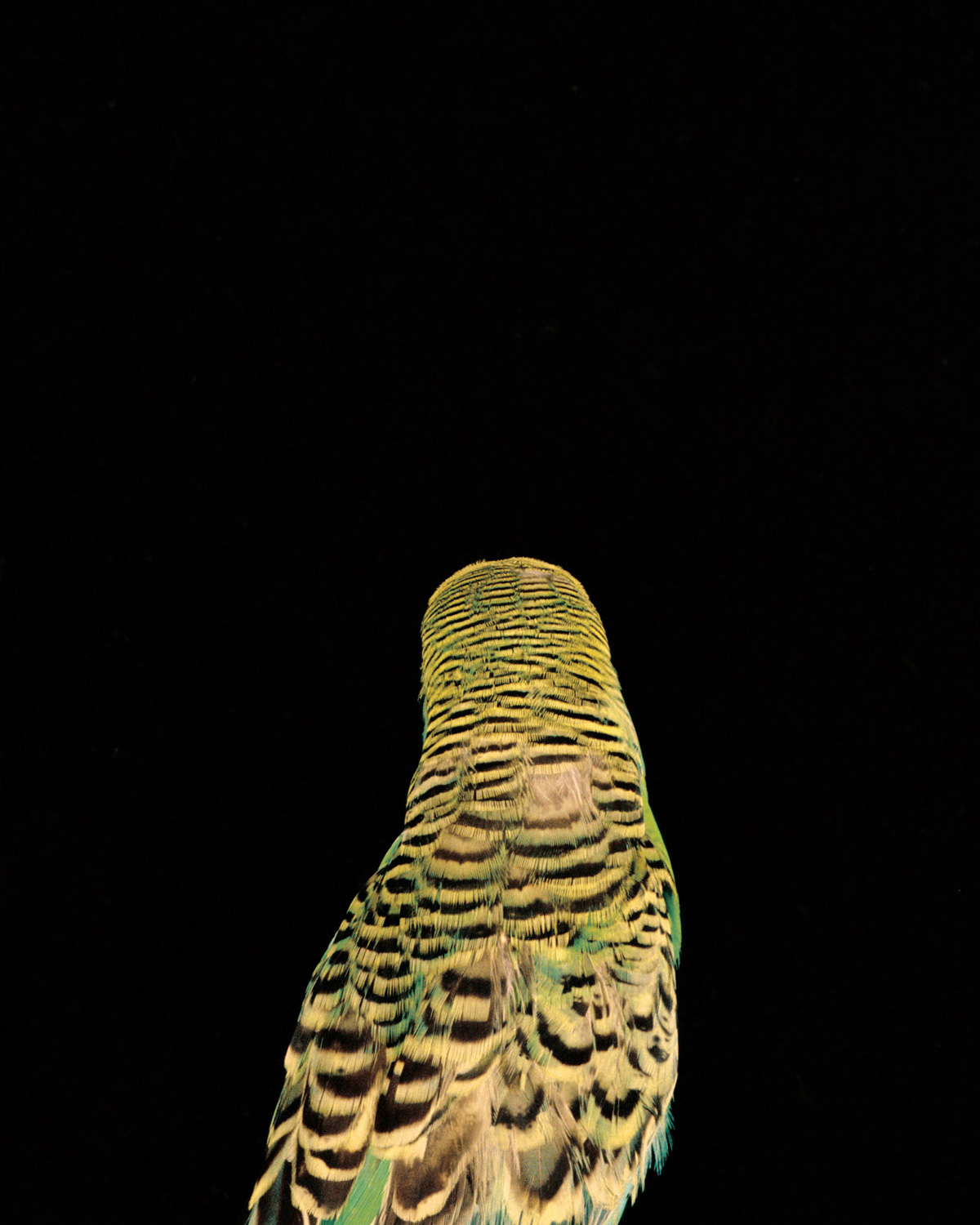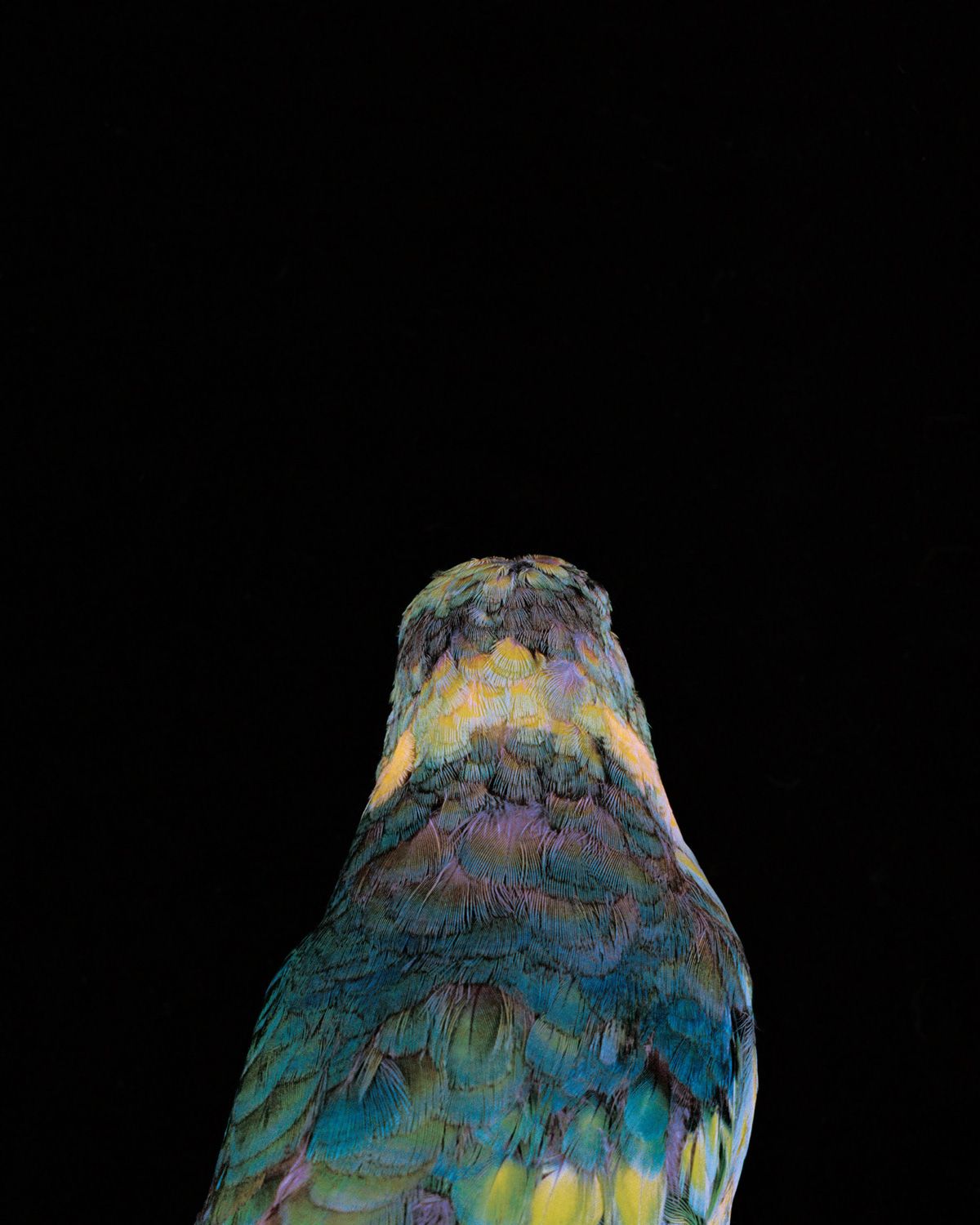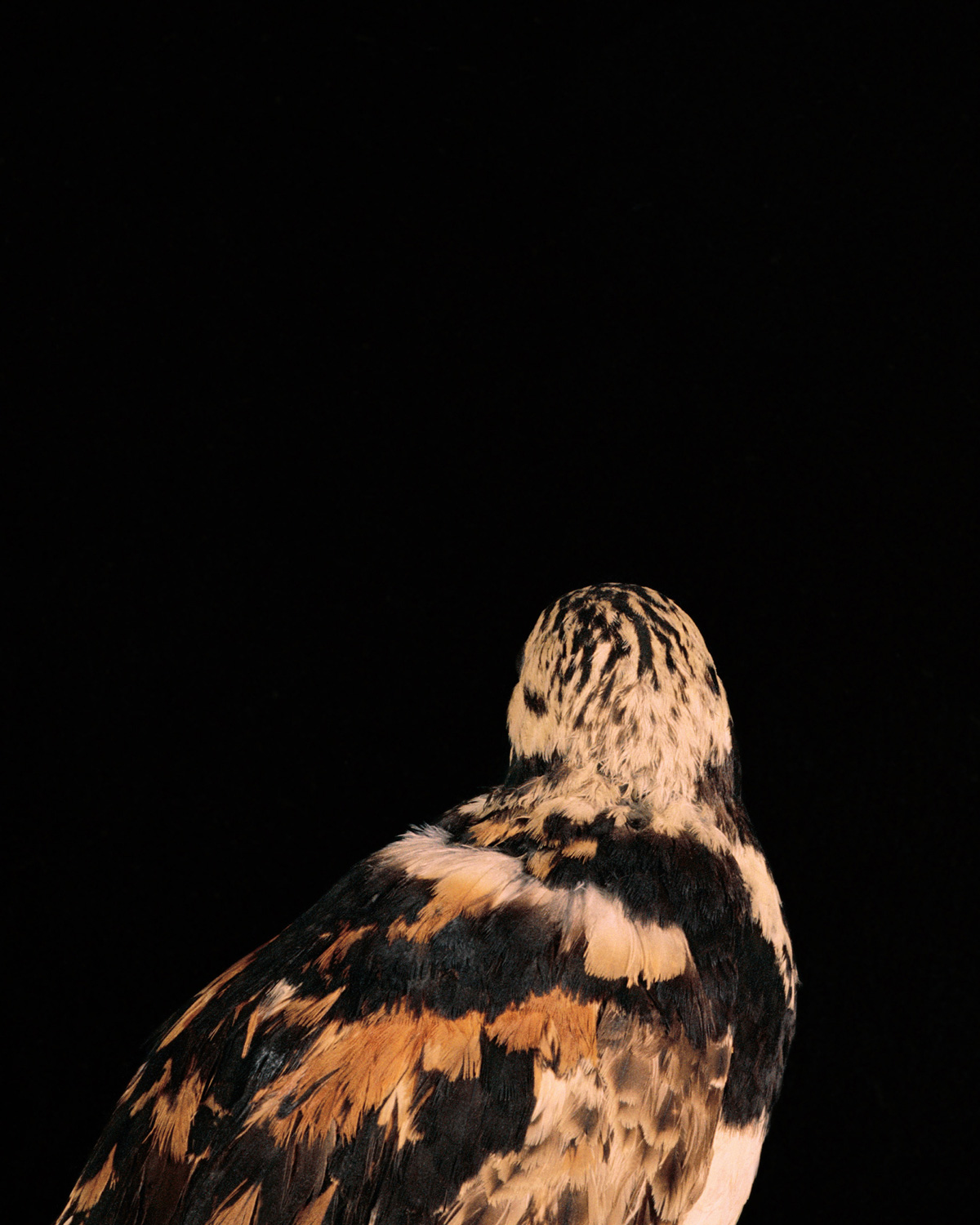Artist Project / Bad Birds
Look away
Lynne Roberts-Goodwin
Lynne Roberts-Goodwin’s “Bad Birds” are portraits of long-dead birds
from the collection of the Department of Ornithology at the Australian
Museum in Sydney. They were photographed in the artist’s studio with
the assistance of Dr. Walter Bowles, the Department’s Head
Veterinarian, and his assistants. The initial twenty portraits were
made from the Australian Avian collection, including native Australian
bird species such as the Budgerigar and the Ring-Necked Parrot. The
birds were placed as if they were in a museum diorama but without the
painted backdrop. They all face away from the camera, but are
nevertheless easily identifiable as species by plumage, markings, and
relative differences in upper-body proportions. The absence of the face
confounds our anthropomorphic projections, frustrating our tendency to
want to read certain kinds of temperament or character into the faces
of animals. Of course, even though the frontal view isn’t really
necessary for species classification, it helps immeasurably in the
identification of individuals, as official identity documents such as
passports have long demonstrated. Indeed, a different strand of
Roberts-Goodwin’s own work acknowledges the utility of the conventional
portrait view. In another of her animal projects, she worked with
scientists on location at isolated royal falcon preserves in the
Persian Gulf, in Oman, and the United Arab Emirates, recording royal
hunting birds who were deliberately posed facing the camera in order to
satisfy her royal clients. Roberts-Goodwin is now helping
ornithologists in the region to develop animal passports that will at
some point assist in the regulation of the international rare species
trade and the eradication of the illicit hunting-bird market.
The reason why Roberts-Goodwin’s bird photographs can simultaneously
function in both artistic and ornithological spheres is that her images
are highly exact, which is to say that the metonymy of plumage enables
a surprising degree of information. For the “Bad Birds,” she knew that
rear-facing and less conventionally informative views would show the
color shifts and marks in plumage that differentiate males from females
and juveniles from adults, and even breeding from nonbreeding birds.
But at the same time she understood that turning the birds away,
despite the ornithologically functional result, would inevitably
suggest that she—or the birds—refused to disclose something essential
of their character. Her series’ title, “Bad Birds,” amplifies this
uncertainty. For much as we might like to project human emotions onto
birds (and imagine that these once-talkative animals are like bad
children, told to stand in a corner, face to the wall, or else suppose
instead that the birds are shy, refusing to meet the camera’s gaze), it
is more the case that her “Bad Birds” are, first, the museum’s
imperfect, bad specimens and, second, that the categorization implied
by “Bad Birds” invites precisely the kinds of psychological projection
described above, even if to confound it by a studied, documentary
neutrality.
—Charles Green




Lynne Roberts-Goodwin is a Sydney-based photographic artist. Her work has been the subject of solo exhibitions and associated publications in New York, Los Angeles, London, Paris, the United Arab Emirates, and Melbourne, and her latest Australia Council-funded project, “Disappearing Act,” about the Frankincense Trail was shown in April 2005 at Sherman Galleries, Sydney.
Spotted an error? Email us at corrections at cabinetmagazine dot org.
If you’ve enjoyed the free articles that we offer on our site, please consider subscribing to our nonprofit magazine. You get twelve online issues and unlimited access to all our archives.